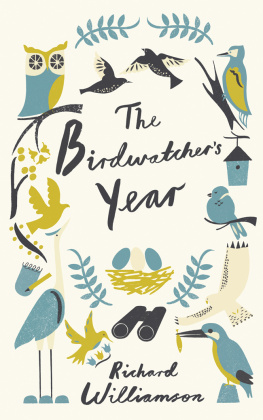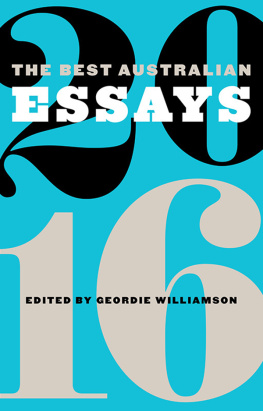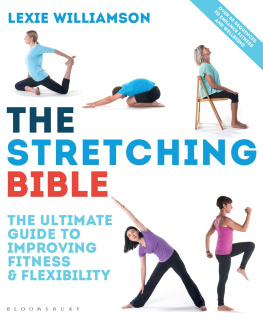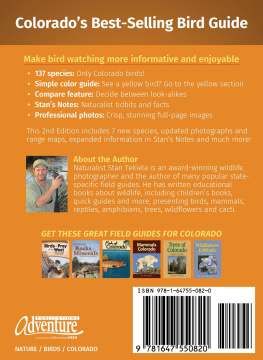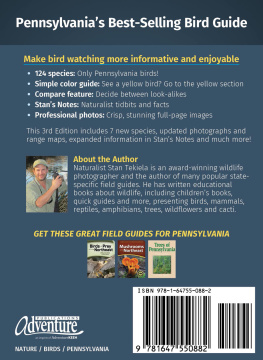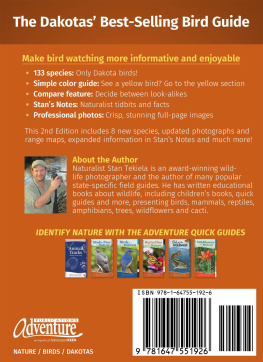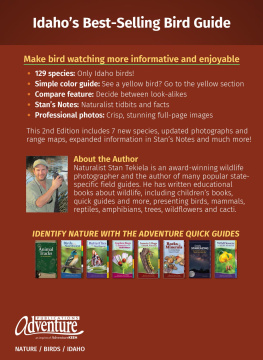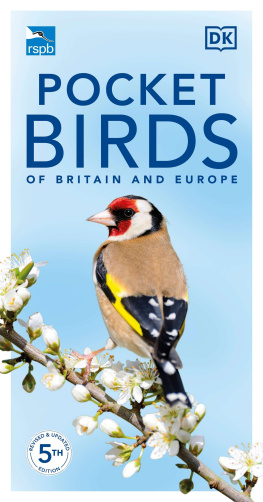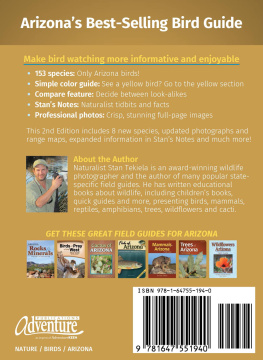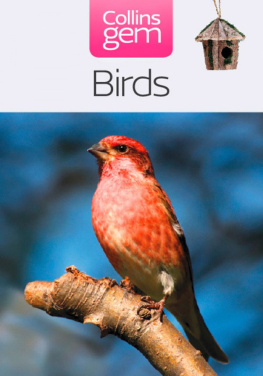
THE BIRDWATCHERS YEAR
Copyright Richard Williamson, 2013
Illustrations by Debbie Powell
All rights reserved.
No part of this book may be reproduced by any means, nor transmitted, nor translated into a machine language, without the written permission of the publishers.
Richard Williamson has asserted his right to be identified as the author of this work in accordance with sections 77 and 78 of the Copyright, Designs and Patents Act 1988.
Condition of Sale
This book is sold subject to the condition that it shall not, by way of trade or otherwise, be lent, re-sold, hired out or otherwise circulated in any form of binding or cover other than that in which it is published and without a similar condition including this condition being imposed on the subsequent purchaser.
Summersdale Publishers Ltd
46 West Street
Chichester
West Sussex
PO19 1RP
UK
www.summersdale.com
Printed and bound in Czech Republic
eISBN: 978-0-85765-982-8
Substantial discounts on bulk quantities of Summersdale books are available to corporations, professional associations and other organisations. For details contact Nicky Douglas by telephone: +44 (0) 1243 756902, fax: +44 (0) 1243 786300 or email: .
Contents
A Note from the Author
BEFORE YOU SET off you will need binoculars, preferably with very good light-gathering capabilities to be able to see distant birds properly; aim for lightweights (or they will become tiresome after an hour) with a good magnification factor. To ensure you get a pair with suitable magnification, divide the smaller number into the larger number and avoid anything less than 5, e.g. for 7 x 42 (42 7 = 6). Telescopes with much higher (therefore better) magnification will need a tripod to steady them: some prefer them but they tend to be cumbersome.
FOR IDENTIFICATION PURPOSES you will need a pocket guide: my favourite is the Collins Guide to Birds, which fits easily into the pocket.
CLOTHING SHOULD BE appropriate to the season: good waterproof boots are often necessary even in summer: take a mobile telephone in case of emergency food and drink as required! If walking far in an unknown area a detailed map is essential.
THERE ARE CURRENTLY 596 birds on the British list, as seen since 1950 (but many are once-only rarities). Of these, 117 breed here and many are regular winter visitors: of which you will find about 200 species mentioned in the present text.
BIRDWATCHING IS FUN: enjoy!
January
Garden

WHEN THE DAYS begin to lengthen, then the cold begins to strengthen is the old saying. Unlike us, garden birds have only 89 hours out of the 24 to find food in January. They need regular feeding, so remember Cock Robin is not just for Christmas: he needs you every day in the winter.
WHEN SETTING UP feeding stations, separate them so birds do not waste energy fighting. Flat tables are best for Blackbirds, Robins, Dunnocks (thats Hedge Sparrows) and Collared Doves. To prevent disease, tables should be scrubbed down with water regularly.
NUT FEEDERS AND fat-balls are best for Nuthatches and Tits; Niger seed for Finches, such as Siskins and Goldfinches; loose wheat on the ground for Chaffinches. If buying these is too much for your weekly budget, then household scraps breadcrumbs rubbed round the frying pan fat, some suet, a handful of currants, even cheese cut up into tiny pieces, bacon rind, melted lard have saved millions of birds over decades past. Avoid anything too salty.
BIRDS NEED FRESH water every day, preferably in a shallow container. Old frying pans are ideal they can be easily cleaned and are the correct depth for small, nervous birds, which are frightened of drowning.

MAKE SURE OLD nest boxes are cleaned out if you have not done this already. Be aware that they can be full of bird fleas waiting hungrily for a new host. Wrens often use a single box as a communal dormitory for warmth: 25 have been recorded in one single box, though the first in have to sleep at the bottom of the pile and may be suffocated. However, the combined fug keeps most of them alive on bitterly cold nights. As many as 56 Wrens have been recorded sleeping together in farm straw stacks.
ROBINS ARE ONE of the commonest garden birds, with an average of about 12 million in Britain. Six and a half million Blue Tits also occupy almost every area except mountaintops. But all birds have peak years followed by steep declines. Many go away for the winter as well. Cock Robin might hold the fort in the garden, but his wife may well be taking a holiday down in the south of France for the winter, returning when it gets warmer here.
YOUR GARDEN BIRDS might be pestered by Sparrowhawks. Placing the bird table and feeding stations near a dense prickly bush could save their lives in an emergency.

Woodland

CROSSBILLS ARE THE first nesters in the southern fir forests; they could already be sitting on eggs in January. The cock birds glow bright red and look a bit like small parrots as they swing about high in the conifers. The nests are at the end of branches at any height between 3 and 20 metres. The male may help the female to build the nest, which is of lichen-covered twigs with cup of moss, grass and even sheeps wool!
THE SMALLEST BIRDS in Britain are the Goldcrest and Firecrest. They live high in the canopy of fir woods, but in January may hunt the forest floor for small insects and can become very confiding. I have had one actually stand on my foot.
RAVENS MAY HAVE been courting as early as December, but are certainly active now. The male is a bit of a show-off with his display from a good height, he calls with one of his 50 different croaking sounds to make sure the female is attentive and watching, then closes his wings and rolls over onto his back, plummeting to earth like a brick. At the last second he turns right side up and opens his wings again just before hitting the ground. She is amazed, even though she could have seen the same act for the past 40 years.

WOODPECKERS FIND LIFE especially difficult now and many will die. The problem varies: for Green Woodpeckers, the ground might freeze solid sealing off the supply of ant eggs; for Great and Lesser Spotted, they could have a severely depleted supply of beetle larvae in dead timber.
IF YOU OWN or manage woodland, whether mature timber or coppice or shrubs, try to forget that old idea of cutting out dead wood. It plays an important role and removing it can be a death sentence for woodpeckers, Nuthatches and many other species, as it contains the larvae of beetles on which these birds feed.
JANUARY IS THE time to hunt our woodlands for signs of Tawny Owls the sound of their calls in the dusk or on a moonlit night is exciting. Also look around the bases of old trees for circles of cast fur pellets; these are the remains of mice and voles which the owl cannot digest. By examining these you can find out from the skulls what they have been eating. Bank and short-tailed voles, pygmy, common and water shrews, wood and yellow-necked mice, are the main diet.
Next page
